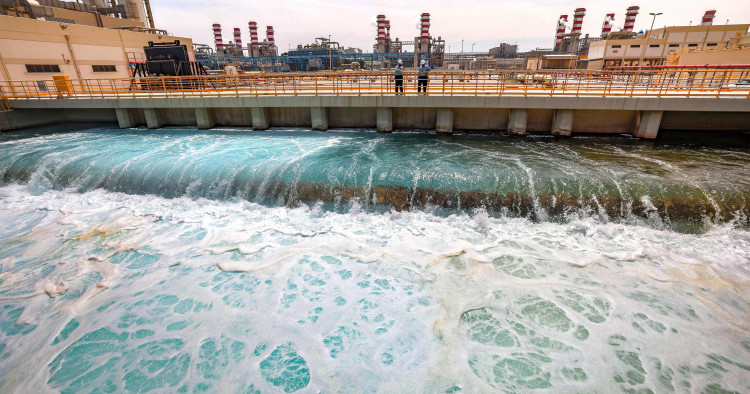Increasing deployment of large-scale grid-integrated Energy Storage Systems (EES) in Gulf Arab states is being driven by the implementation of renewable energy systems. More and more, variable renewable energies are being integrated into the grid as upgrades to transmission and distribution networks are being deferred. As a result, demand for ESS is likely to grow.
Planned to expand at least 15-fold within the next four years, the announced large-scale storage systems in Gulf Arab states are together expected to exceed 1.5GW of capacity by 2027, with 7.5GWh of cumulative stored energy deployed through several notable projects in Saudi Arabia and the United Arab Emirates (UAE). Separately, a 1GW dam in Wadi Baysh, Saudi Arabia faces an uncertain fate. If the project proceeds, then the region’s combined storage capacity will reach 2.5GW by 2027, with a stored energy capacity of 13.5GWh.
Photo by FAYEZ NURELDINE/AFP via Getty Images
The Middle East Institute (MEI) is an independent, non-partisan, non-for-profit, educational organization. It does not engage in advocacy and its scholars’ opinions are their own. MEI welcomes financial donations, but retains sole editorial control over its work and its publications reflect only the authors’ views. For a listing of MEI donors, please click here.













